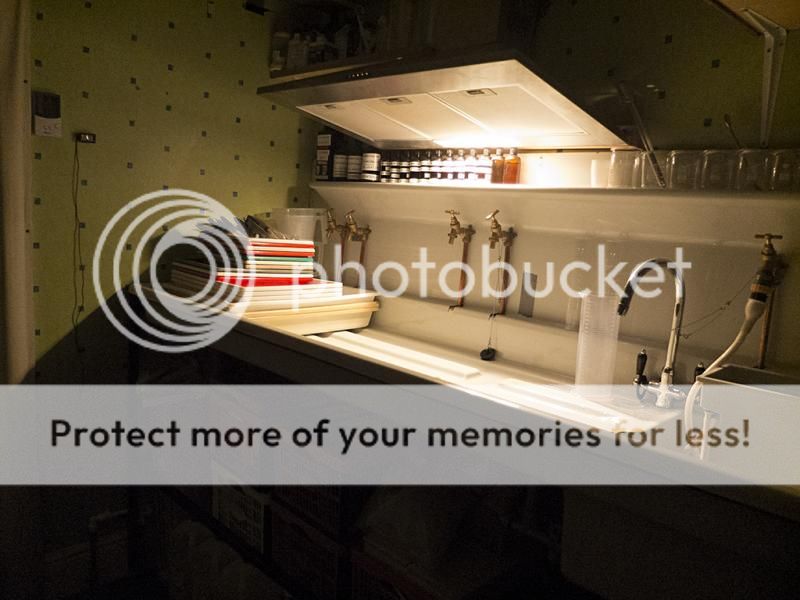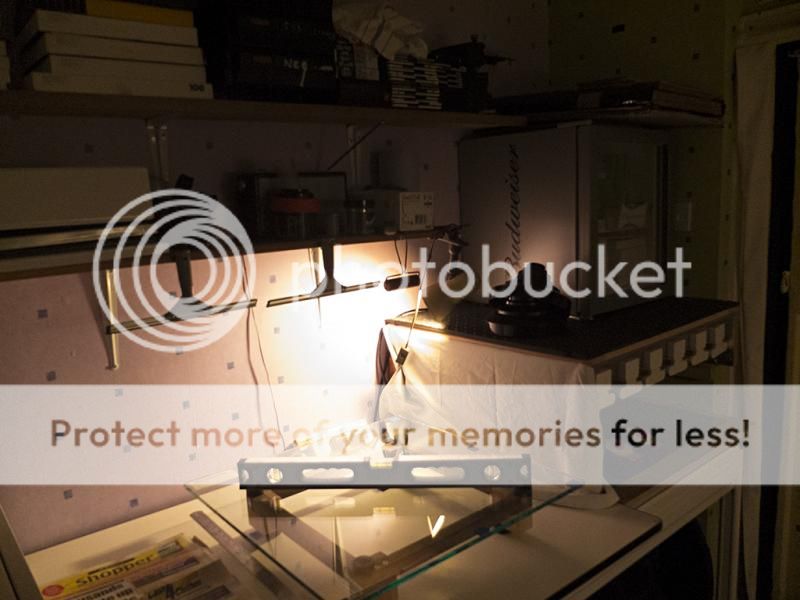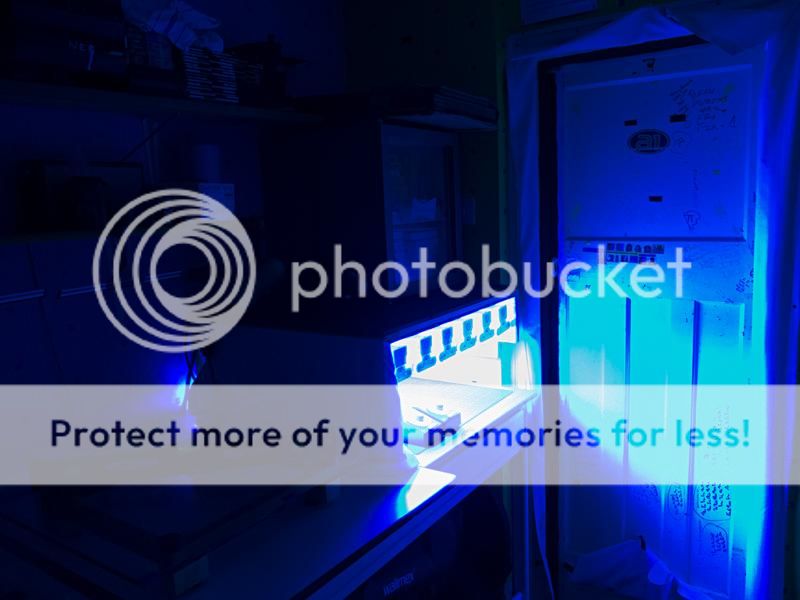- Messages
- 7,179
- Name
- Edward Bray
- Edit My Images
- Yes
I have almost finished my Darkroom(film)/Dimroom, all that is now left to do is to reinstate my 950nm IR lighting, this will need a little moving around as the shelving for chemicals and equipment have encroached on to their previous mounting areas.
Lots of pictures, but basically it is a 8ft x 8ft x 9ft high room with a 7ft Sink with 3 pairs of taps and an additional washpoint. There is a film/tissue drying cabinet at one end with a portable (not any more) air conditioner mounted above it. The Actinic UV Light Bank has 12x 2ft tubes and give a useable exposure in 6-10 minutes depending on the density of the negative used.
I have tried to use my limited Carbon Printing experience to adapt the room to be most suitable for me, but it is inevitable that I will make changes as my Carbon Printing journey continues.
I have mounted the CPP2 into what was the window recess and plumbed it in although I have made it possible to lift out the CPP2s waste pipe to be able to place it in a bottle if I am planning on reusing a chemical.
View left from door showing end of sink and CPP2 in window recess:
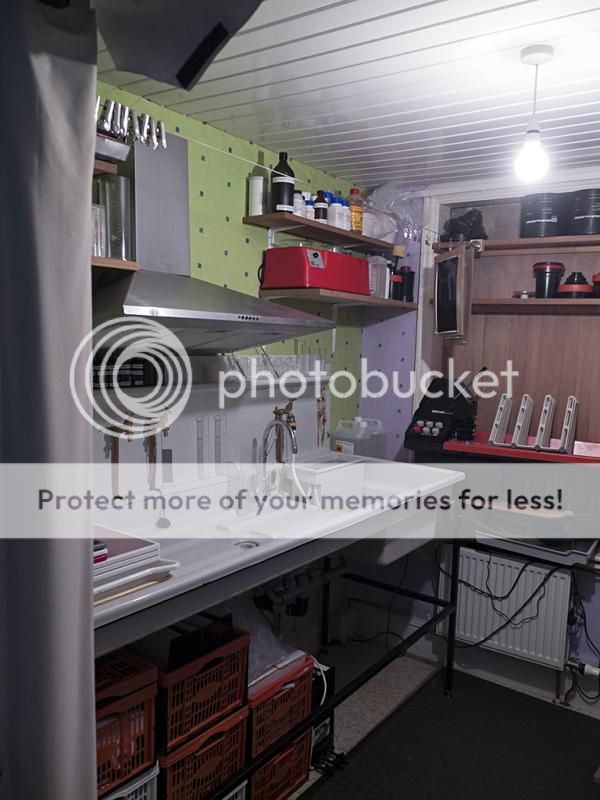
View right from door showing dry side bench:

Above dry side showing materials and Aircon:
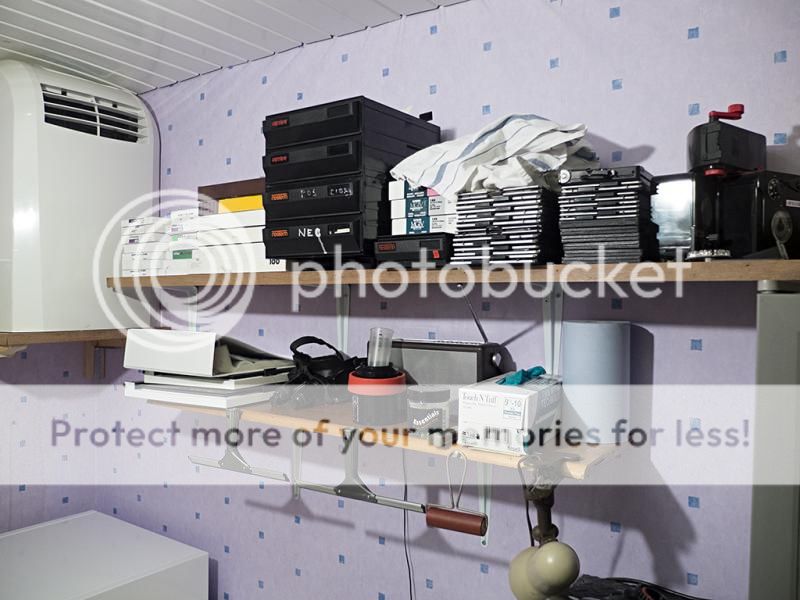
Extraction hood above sink to remove acetone fumes when sensitising tissues:
 [/URL[/U]]
[/URL[/U]]
End of sink inside door with storage above and trays stacked for use. Just inside the door is a humidity meter and thermometer:

Chemical and TPE (for Glop making) storage:
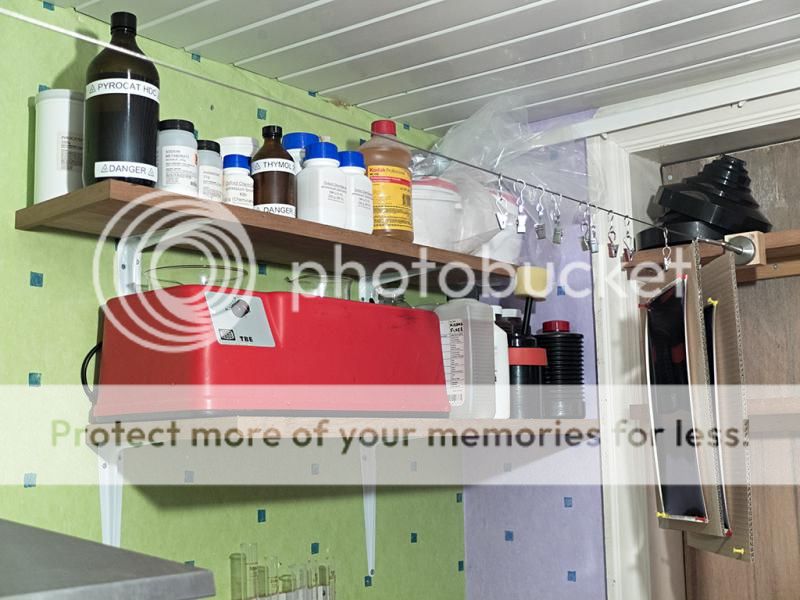
CPP2 Plumbing:
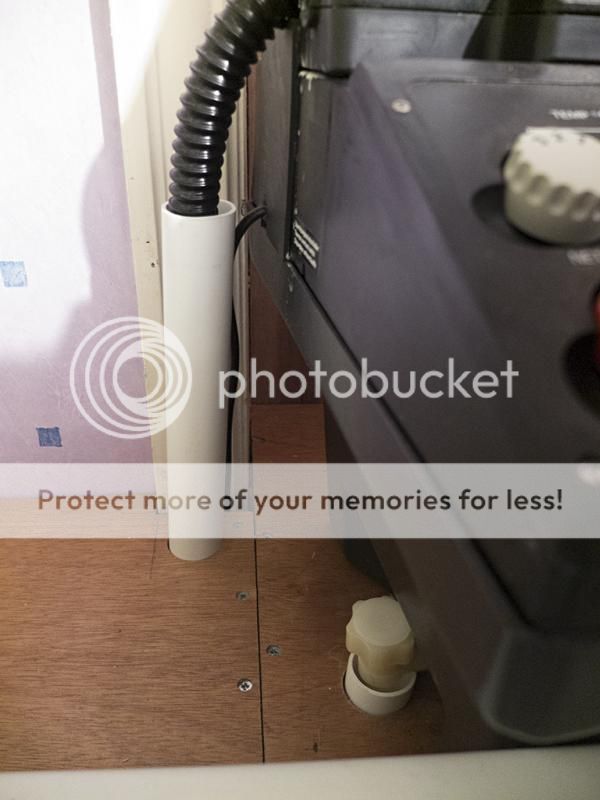
Lots of pictures, but basically it is a 8ft x 8ft x 9ft high room with a 7ft Sink with 3 pairs of taps and an additional washpoint. There is a film/tissue drying cabinet at one end with a portable (not any more) air conditioner mounted above it. The Actinic UV Light Bank has 12x 2ft tubes and give a useable exposure in 6-10 minutes depending on the density of the negative used.
I have tried to use my limited Carbon Printing experience to adapt the room to be most suitable for me, but it is inevitable that I will make changes as my Carbon Printing journey continues.
I have mounted the CPP2 into what was the window recess and plumbed it in although I have made it possible to lift out the CPP2s waste pipe to be able to place it in a bottle if I am planning on reusing a chemical.
View left from door showing end of sink and CPP2 in window recess:

View right from door showing dry side bench:

Above dry side showing materials and Aircon:

Extraction hood above sink to remove acetone fumes when sensitising tissues:
 [/URL[/U]]
[/URL[/U]]End of sink inside door with storage above and trays stacked for use. Just inside the door is a humidity meter and thermometer:

Chemical and TPE (for Glop making) storage:

CPP2 Plumbing:




